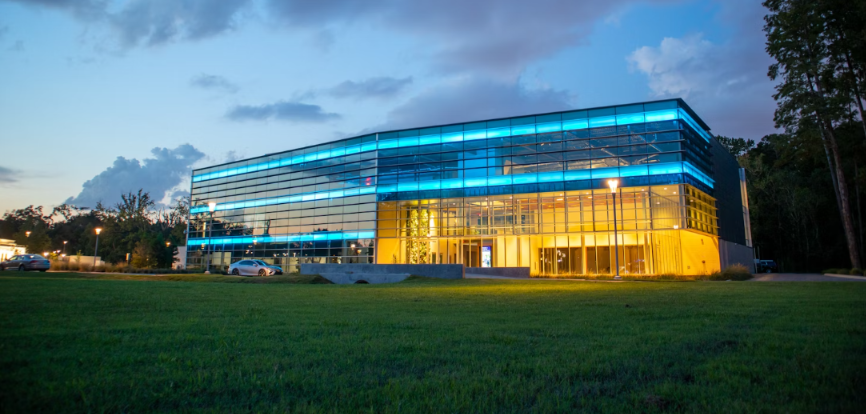Embracing Eco-Friendly Innovation, How Smart Tech is Shaping Industries

By: Katie Brenneman
Eco-friendly innovations are changing the way that entire industries operate. Today, modern businesses can rely on a flight of IoT sensors and data collection tools to improve their climate reporting, minimize their carbon footprint, and combat global warming.
The smart tech revolution also helps companies across multiple industries become more efficient. This is key, as combating climate change requires using fewer natural resources and producing less waste.
Even simple changes, like building homes with water sensors, can reduce emissions, detect leaks, and reduce the environmental impact that industries like construction have on the planet.
Energy Production
Our World in Data (OWD) data shows that the energy sector produces most of our greenhouse gas (GHG) emissions, which are used to produce electricity and heat. The industry currently produces 15.4 trillion tonnes, or 1.9 tonnes per capita, of GHG emissions annually.
Reducing the amount of GHG released during energy production is a tall order, but smart tech is well poised to help reduce emissions. This is because digitized systems, which use IoT sensors and smart meters, offer improved reliability, increased material efficiency, and improved grid management.
This sentiment is echoed by International Energy Agency (IEA) data, which shows that smart device installation has risen rapidly in recent years. There are over 1 billion smart power meters and 13 billion automated sensors today. IEA data also shows that more suppliers use distribution sensors to manage power grids. This empowers energy businesses to manage their supply better and helps improve the overall efficiency of the industry.
Transport
The transport industry is the second largest emitter of GHG and CO2 today. OWD data shows the transport industry produced 15.11 tonnes of CO2 in 2020 alone. Despite being important for economic growth, cars, planes, trucks, and ships also have a net negative impact on the environment. OECD data shows that transport-related pollutants kill 3.5 million annually and that ports produce harmful sulphur and nitrous oxide.
Smart tech can increase the efficiency of the transport industry and limit the carbon cost of shipping, commuting, and flying. Even everyday devices, like smartphones that use Google Maps’ fuel-efficient routing, can give drivers directions that minimize queuing and reduce exhaust emissions.
Similarly, IoT devices can improve the efficiency of vehicles used in the shipping industry. IoT sensors can give fleet managers real-time insights into fuel consumption and engine health. This helps managers spot faulty equipment and replace high-emitting vehicles with more energy-efficient fleets.
Agriculture
Farming is responsible for significant methane and nitrous oxide emissions. This is a serious issue as, according to the UN’s Environmental Program, methane accounts for 30% of global warming and causes 1 million premature deaths yearly. Agriculture is infamous for its negative environmental impact, too, due to deforestation and intensive farming practices.
Smart technology can clean up agriculture and minimize the environmental impact of our food supply. Farmers who embrace precision agriculture utilize AI software and IoT technology to manage their water use better, reduce high-pollutant runoff, and remotely manage resource allocation.
Farms that transition to smart tech can minimize their GHG footprint, too. For example, IoT-integrated farming practices allow agricultural professionals to remotely monitor greenhouse conditions and temperatures, manage crops and cattle, and accurately allocate energy-intensive resources to the right places. This minimizes production risks and increases yield while reducing energy and water waste.
Construction
Energy-efficient construction is crucial if we meet the Paris Agreement’s conditions and limit global warming to 1.5C by the end of this century. Construction companies that do decide to take their commitment to climate change seriously can benefit from the recent rise of smart materials. Firms who choose to use smart building materials will benefit from:
- Energy Efficiency: Materials like thermochromic glass have a low carbon cost and improve a building’s energy efficiency. They respond to heat from sunlight by offering increased shade on hot days to control temperatures without using energy-intensive HVAC systems.
- Reduced Maintenance Costs: Minimizing the lifecycle cost of a building is crucial for construction firms. Companies embracing smart building materials can minimize costs by utilizing self-healing concrete and self-cleaning surfaces.
- Structural Integrity: Materials like superhydrophobic coatings and aerogels help buildings last longer. This is crucial, as replacing old structures with new builds produces significant GHG and may disrupt the local environment.
Construction firms can lean on these smart building materials to improve operational efficiency, reduce emissions, and help maintain longer buildings. This can empower local authorities to build more sustainable cities and replace dilapidated buildings with newer, sustainable structures.
Conclusion
Smart technology is driving eco-friendly innovations and helping high-impact industries combat climate change. This is crucial, as we need industries like the energy sector to clean up their act and minimize their impact to cap temperature rises to 1.5C this century. Smart tech can reduce costs and improve operational efficiency, too. This makes it the perfect choice in industries like construction, where today’s building projects will have a lasting impact on the environment for years to come.
_______________________________________________
Katie Brenneman is a passionate writer specializing in business management, tech innovations, education, and sustainability-related content.



